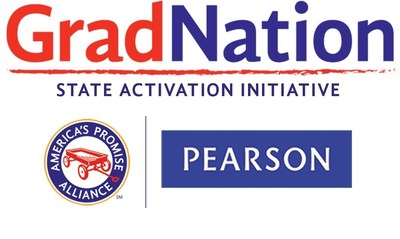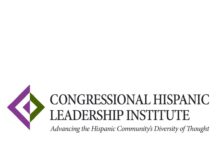WASHINGTON and BOSTON, July 11, 2018 /PRNewswire-HISPANIC PR WIRE/ — Harsh school discipline policies and practices are leading students—particularly students of color and students with disabilities—to disconnect from school, according to a new report from the Center for Promise, the research institute of America’s Promise Alliance.

While national data consistently shows that students are negatively impacted by exclusionary discipline policies in schools, such as suspensions and expulsions, very little is known about how students and educators experience disciplinary actions and how it impacts school climate. The latest research from the Center, Disciplined and Disconnected: How Students Experience Exclusionary Discipline in Minnesota and the Promise of Non-Exclusionary Alternatives, sought to better understand how and why disconnection from school happens for many students who experience discipline.
The report is part of a three-year collaboration between America’s Promise Alliance and Pearson through the GradNation State Activation initiative, focused on increasing high school graduation rates by leveraging statewide change. The Minnesota Alliance With Youth, a grantee of this initiative, provided local support for the research, which explores how school climate impacts students’ choices and outcomes on their path to high school graduation.
“Exclusionary discipline policies often separate students into two categories—good and bad—with the so-called bad kids taken out of classrooms under the belief that it will make schools more conducive to learning,” said Dr. Jonathan Zaff, executive director of the Center for Promise. “The reality is that exclusionary discipline practices do not make schools more conducive to learning, do not help improve student behavior, and do not make schools safer. But these practices do force youth off-track, leading them to further disengage from their education and threatening their ability to succeed in school and life.”
“Despite its long-held popularity in American schools, exclusionary discipline is consistently shown to undermine academic success for students,” said Dr. Elizabeth Pufall Jones, a research scientist at the Center for Promise and lead author of the report. “If states and schools wish to explore a non-exclusionary discipline approach, such as restorative justice, a shift in mindset is required. We hope the findings can be used as a basis for reflection and training to move away from this old way of thinking and embrace practices and policies that put students first.”
Removing a student from class or the school building is federally mandated for dangerous behaviors such as violence, weapons possession, or drug possession. Yet a significant portion of school removals nationally are for non-dangerous violations, such as tardiness, or behaviors that can be interpreted subjectively, such as defiance or disrespect. As a result, students who are exposed to exclusionary discipline policies are often at risk of poor academic performance, lower levels of school engagement, leaving school without graduating, higher levels of school violence, and increased likelihood of future involvement with the criminal justice system.
Based on these potential outcomes, there are a growing number of states and school districts contending with their discipline practices today. Minnesota is one state where there has been a significant interest in reforming exclusionary discipline policies and practices.
“Not only have suspensions and expulsions been disproportionately applied in Minnesota, but nearly half of suspensions and exclusions in schools are for minor, non-violent student behaviors that did not endanger others,” said GradMinnesota Director Alexis Goffe of the Minnesota Alliance With Youth. “What we’ve learned is that, without clear and objective standards, students may be subject to individual school personnel biases about what constitutes disruption.”
Findings. The Center for Promise conducted group interviews with middle and high school students who had experienced exclusionary discipline firsthand in three Minnesota communities. Across all group interviews, young people explained how their experiences with disciplinary interventions led them to disconnect from school. Specifically, the interventions they experienced often did not address the root causes of their behavior, disrupted their learning, and made them feel unvalued and unwelcome. Racism and other forms of labeling often contributed to those feelings.
One student stated, “All you got to do is get suspended one time and you’re labeled. I see it, like they follow the same kids around, like everybody knows, hey, those are the bad kids….”
Moving Away from Exclusion. Given the numerous challenges presented by exclusionary discipline shown in research and evident in the youth interviews conducted by the Center, leaders at various levels of the education sector are exploring promising, non-exclusionary discipline approaches for addressing student misconduct and supporting student success and well-being. The three most promising practices highlighted in the report are restorative practices, school-wide positive behavioral intervention systems, and social-emotional learning.
Insights from the Field. Interviews were also conducted with Minnesota school administrators implementing non-exclusionary practices at their schools. The school leaders featured in the report represent stories of success, but each engaged in years of work and benefited from a variety of supports in order to build their school’s internal capacity for restorative justice work.
Administrators emphasized the need for school-wide professional learning that engages experts in the non-exclusionary practices being implemented, engaging students as leaders in implementing new practices, and building capacity by learning from and sharing promising practices.
“The voices of students and school leaders provide a unique and necessary perspective,” said Stacy Skelly, vice president of corporate affairs, Pearson. “We need to support our students and families, as well as schools and districts, to use the perspectives in this report to raise awareness of alternative discipline practices. The key to this work is understanding, and to ensure the necessary teacher and learner supports are in place so all young people can graduate and flourish.”
“The biggest takeaway is that young people say they feel there is no effort by school leaders to learn what they think or feel or explore what is going on in their lives to help them figure out a plan to improve the challenging circumstances they face, which may be causing their behavior,” added John Gomperts, president and CEO of America’s Promise. “When students don’t feel heard or understood, that leads them to check out and disconnect not only from school, but their future. That is a terrible and unnecessary result. Bottom line: If we want more students to stay on a path to graduation, schools should consider a non-exclusionary approach to their discipline practices and policies to make sure they’re not doing more harm than good.”
As one school administrator put it, “We’ve got to change what we’re doing because what we did before isn’t working.”
Authors, Partners, and Sponsors. Disciplined and Disconnected was co-authored by Elizabeth Pufall Jones, Ph.D., Max Margolius, Miriam Rollock, Catalina Tang Yan, Marissa L. Cole, and Jonathan F. Zaff, Ph.D. at the Center for Promise, which is housed at the Boston University Wheelock College of Education & Human Development. This research is part of GradNation State Activation, an initiative of the GradNation campaign to raise high school graduation rates to 90 percent. The Minnesota Alliance With Youth, a youth development advocacy organization, is a grantee of this national effort. Pearson is the sole sponsor of this study and its dissemination.
Full Report. To read the full report, visit: http://www.americaspromise.org/disciplined-and-disconnected.
Webinar. A webinar to discuss the findings is scheduled for July 11 at 1:30 PM ET. Register here.
The Center for Promise is the applied research institute for America’s Promise Alliance, housed at the Boston University Wheelock College of Education & Human Development and dedicated to understanding what young people need to thrive and how to create the conditions of success for all young people. www.AmericasPromise.org/program/center-promise
America’s Promise Alliance is the nation’s largest network dedicated to improving the lives of children and youth. The Alliance brings together more than 450 national organizations and thousands of community leaders to focus the nation’s attention on young people’s lives and voices, lead bold campaigns to expand opportunity, conduct groundbreaking research on what young people need to thrive, and accelerate the adoption of strategies that help young people succeed. GradNation, a signature campaign, has helped to increase the nation’s high school graduation rate to a record high. www.AmericasPromise.org
Available Topic Expert(s): For information on the listed expert(s), click appropriate link.
John Gomperts
http://www.profnetconnect.com/johng
Jonathan Zaff
http://www.profnetconnect.com/jonz
Media Contact: Daria Hall
[email protected]
Logo – https://mma.prnewswire.com/media/276673/gradnation_state_activation_logo.jpg
SOURCE America’s Promise Alliance






